
Harry Gill LRIBA (25 January 1858 - 15 February 1925) was an architect based in Nottingham. [1]

Harry Gill LRIBA (25 January 1858 - 15 February 1925) was an architect based in Nottingham. [1]
Harry Gill was born in 1858, the son of William Gill (1824-1891) and Lydia Pinder (1825-1908). He married Elizabeth Pare (b. 1857) and they had a son Harry Percival Gill (b. 1887), also later an architect.
He was a pupil articled to Henry Sulley. He then commenced business on his own. He was appointed a Licentiate of the Royal Institute of British Architects in 1912. [2] From 1901 to 1908 he took as his assistant his former pupil, Joseph Warburton.
He was president of the Nottingham and Derby Architectural Society for five years. He was also an antiquary and archaeologist, and published many articles in the Transactions of the Thoroton Society of Nottinghamshire.
He also designed war memorials which can be found in All Saints' Church, Nottingham, Shire Hall, Nottingham, and Radcliffe and Southwell.
He was responsible for a good deal of ecclesiastical and domestic architecture in the Nottingham area.
He died on 15 February 1925 and left an estate valued at £13,420 17s 6d (equivalent to £814,300in 2021). [3]

Beeston is a town in the Borough of Broxtowe, Nottinghamshire, England, 3.4 miles (5.5 km) south-west of Nottingham city centre. To its north-east is the University of Nottingham's main campus, University Park. The pharmaceutical and retail chemist group Boots has its headquarters 0.6 miles (1 km) east of the centre of Beeston, on the border with Broxtowe and the City of Nottingham. To the south lie the River Trent and the village of Attenborough, with extensive wetlands.

Attenborough is a village in the Borough of Broxtowe in Nottinghamshire, England. It forms part of the Greater Nottingham area and is 4+1⁄2 miles (7.2 km) to the south-west of the city of Nottingham, between Long Eaton and Beeston. It adjoins the suburbs of Toton to the west and Chilwell to the north. The population of the ward, as at the 2011 Census, was 2,328.

Beeston railway station is a Grade II listed railway station on the Midland Main Line which serves the town of Beeston in Nottinghamshire, England. It lies 3.2 miles (5.1 km) south-west of Nottingham railway station, and 750 metres (0.5 mi) south-east of Beeston transport interchange for local buses and Nottingham Express Transit trams. The station is managed by East Midlands Railway.

Watson Fothergill was a British architect who designed over 100 unique buildings in Nottingham in the East Midlands of England, his influences were mainly from the Gothic Revival and Old English vernacular architecture styles.

Albert Edward Lambert FRIBA was an architect based in Nottingham, England.

St. John the Baptist Church is an Anglican church in Beeston, Nottinghamshire, England.
Richard Charles Sutton was an architect based in Nottingham. He was born 1834 and died on 18 October 1915.

Frederick Ball LRIBA was an architect based in Nottingham. He was Sheriff of Nottingham from 1906–07, and Mayor of Nottingham from 1913–1914.

Lieutenant-Colonel Arthur William Lancelot Brewill was an architect based in Nottingham.
Captain Basil Edgar Baily FRIBA was an architect based in Nottingham. Much of his earlier work had to do with nearby churches.
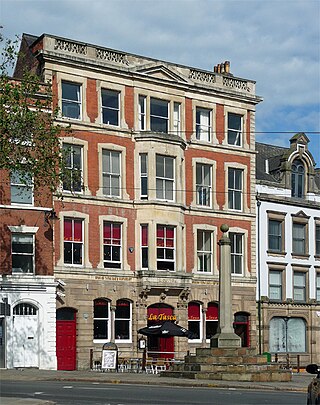
William Arthur Heazell FRIBA was an architect based in Nottingham.
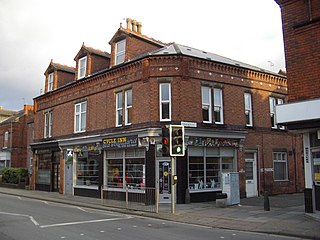
Walter Owen Hickson was an architect and surveyor based in Nottingham.
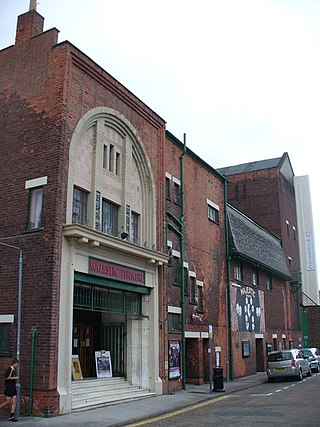
Alfred John Thraves FRIBA was an architect based in Nottingham who specialised in cinema design.

John Rigby Poyser LRIBA was an English architect based in Nottingham.
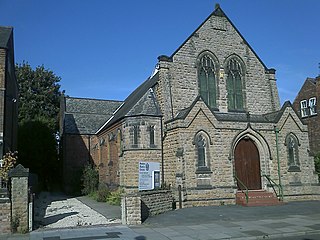
Charles Nelson Holloway was an architect based in Nottingham.

Joseph Warburton LRIBA MRAIC was an 20th century architect based in Beeston, Nottinghamshire and Regina, Saskatchewan.

Station Road, Beeston is street in Beeston, Nottinghamshire. It runs from its junction with High Road, Beeston in Beeston Square to Beeston railway station.

John Bowley LRIBA was an architect and engineer based in England who worked mainly in Beeston, Nottinghamshire and Hastings.

Ernest Hooley LRIBA was an architect based in Long Eaton.
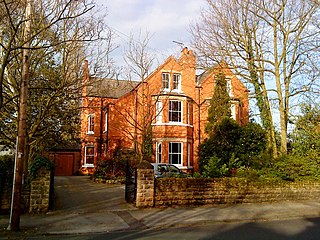
Thomas Woolston was an architect and builder.